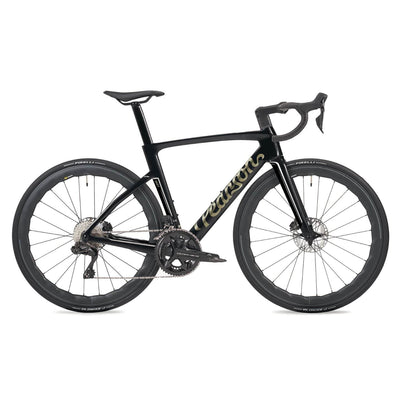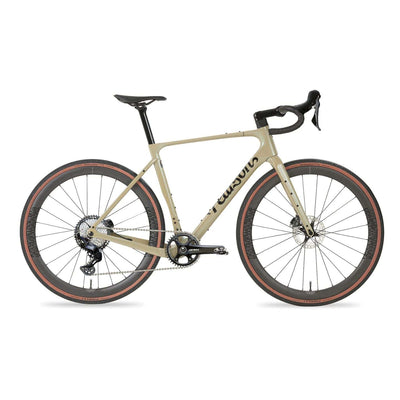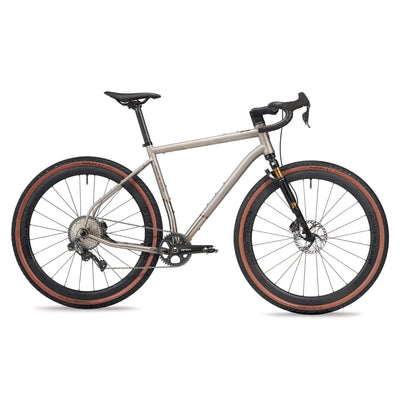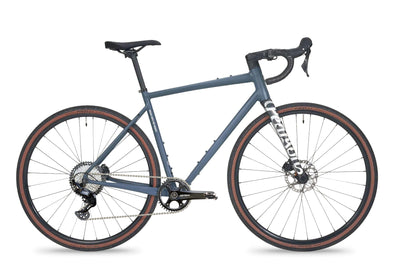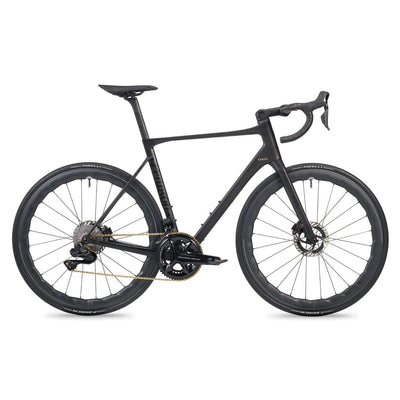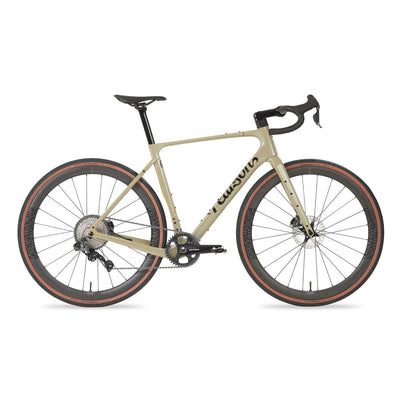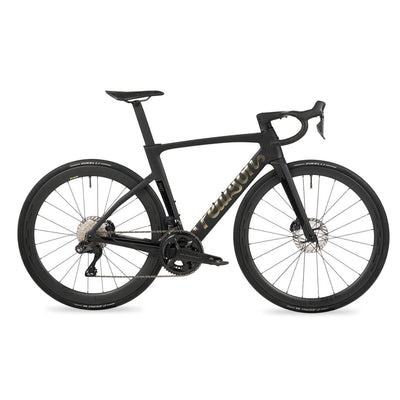The weather’s changing - time to winterise your ride
With the change in seasons, we’ve got months of cold, wet weather to look forward to. How should you prepare your bike for riding through winter?

Winter can be tough on your bike. Roads turn damp, grit gets washed onto them, gritting lorries start scattering salt over the surface to stop ice forming and your bike will get the lot sprayed over it whenever you go out.
For many riders, it’s time to dig out their winter bike - or take to the turbo. If you’ve not got that luxury though, what should you do to prep for winter conditions?
Tyres

It’s worthwhile to switch to sturdier tyres for winter riding. Road tyres for summer use tend to prioritise low weight and low rolling resistance and have minimal tread, whereas tyre makers build their winter tyres to be more robust, usually with thicker rubber and using tyre compounds that grip better in the wet and in cold conditions.
We’ve a lot more on tyres in this post on how to choose the right tyres.
Many winter tyres will also have beefed up sidewalls, with a protection layer built in that extends across the whole width of the tyre - so called bead-to-bead - whereas in summer tyres the protection strip will usually only be under the tread. Some summer tyres forego protection altogether in favour of light weight.
We stock the Continental Grand Prix 4 Season tyres here. They’re a winter tyre classic that has been made for years by Conti and includes its Duraskin tear-resistant casing and a double layer of its Vecran puncture protection belt, which it says does not impact the tyre’s rolling resistance despite upping puncture resistance.
In 25mm width, Conti says that the GP 4 Season tyre weighs 240g as against 225g for the GP5000 summer tyre, so there is a slight weight penalty. The equivalent figures for the 28mm width tyres are 295g for the GP 4 Season and 235g for the GP5000.
There’s more of a tread pattern to the Grand Prix 4 Season tyres too. Although not strictly necessary for water clearance, as road bike tyres are narrow enough to clear water to the sides without needing a tread, the pattern gives a bit of reassurance and extra grip if you do hit a slippery, gritty or muddy piece of surfacing.
Note that both the above tyres need to be used with inner tubes. It’s worth considering running tubeless tyres in winter though, if your winter wheels are tubeless-ready. Although the Contis aren’t tubeless compatible, there are winter tyres from top brands like Schwalbe, Hutchinson and Vittoria which are. We’ve a whole post on how to fit tubeless tyres.
The sealant in a tubeless tyre will usually seal the majority of punctures and even if you have to limp home on a squishy tyre because it’s taken time for the sealant to do its job, that’s almost certainly nicer than standing beside the road with cold hands trying to swap in a spare inner tube. Smaller holes are often sealed without you noticing, although you might find a layer of latex on your frame when you come to wash it post-ride.
Most sealant products are cold stable, but if it’s especially cold check your sealant’s packaging to find its recommended temperature range. Keep an eye on sealant level regularly to make sure it’s not dried out and that you’ve not lost some to a minor puncture and top it up as necessary.
Wheels

You might want to put your best summer wheels away for the winter too. It’s relatively easy for water to get caught in the internal cavity of deep section carbon wheels, and a faff to get it out again. If you’re using rim brakes, the extra abrasion from road debris can wear through a brake track alarmingly quickly, so you should keep an eye on wear and look out for dishing of the rim’s side walls. Some wheels include a small drilling as a wear indicator in the brake track.
A robust set of winter wheels might add a bit of weight and will probably not be as aero as a deeper section carbon wheelset, but it should stand up to the conditions better. Some come with double seals on hub bearings to help protect them better from water ingress. Most are designed to be easily repairable if components do corrode or wear out and they’re likely to be a lot cheaper to replace too.
Mudguards

Mudguards aren’t just a luxury if you’re out in the winter wet, they’re a necessity. A good set of guards will keep wheel spray off you, so you’ll stay more comfortable, and also keep your bike drier.
That means that you’re much less likely to wash the lube off your chain and components (we’ll have more to say on chain lube later), so they’re less likely to rust and should generally work more efficiently. Road grot doesn’t do much for your shifting quality either, particularly if you’re running a mechanical set-up. Even with modern internal cabling it will find its way into derailleurs and can contaminate cables.
That’s even more of a problem on a bike with exposed cabling and you should keep your cables cleaned and well lubed so that your shift quality isn’t degraded. The cable guides under the bottom bracket shell and the entry points to the loop of outer to the rear derailleur are favourite points to get clogged with dirt. Consider fitting sealed cable ends to help keep things cleaner, if you don’t already have them.
Water and salt can contaminate and corrode bearings too. Headset bearings, in particular, are in the line of fire for wheelspray, but wheel bearings and bottom brackets can also take a hit.
Finally, if you’re riding in a group, anyone following you will thank you for fitting mudguards; it’s not much fun riding for miles in a stream of spray from the rear wheel of the bike in front of you.
Fortunately, modern road bikes have a lot more clearance than bikes from a few years ago and many come with mudguard fixtures, so you can bolt guards to your frame. If not, there’s a good range of clip-on mudguards available that can be mounted to any frame or an AssSaver is a last resort which will keep your back a bit drier, if not your bike.
Our adventure bikes come equipped with mudguard eyes; if you’re riding one of our road bike range, you’ll need to use clip on guards if you’re planning to ride it through the winter and want to fit mudguards though.
Lube

Wet conditions play havoc with your drivetrain too. In the summer, we tend to use dry lubes as they generate less friction and don’t collect dirt. But it only takes an hour or two riding in the wet to wash a coating of dry lube off your chain. That will slow things down, probably make your chain and shifting noisy and your chain will quickly rust if it’s left uncoated after a ride.
So as winter approaches, it’s time to change to a wet lube. It will cope far better with water, although it does tend to collect dirt more quickly than dry lube, so you need to be more methodical about keeping your drivetrain clean and relube it more frequently as well.
Wax lubes are also an option, as they repel water and penetrate your chain well, although they too can get gunky, so that your chain needs cleaning.
Whatever lube you use, don’t overapply it. It’s best to give it a wipe down after applying it, while leaving it overnight before riding will give it more time to seep into the chain’s links.
Lights

We’d always recommend running a set of blinkies to up your road presence, at any time of year. It’s even more important in the winter, when even if you’re only out in the middle of the day, the sun can be low in the sky and road muck can smear up a car’s windscreen, which along with light and shade and interior misting can potentially lower drivers’ vision.
A set of lights will make you that much more visible and keep you a bit safer. They’re also important if you’re going to be out at dusk. A ride which you might expect to end well before nightfall can easily turn to riding after dark if you get a mechanical or a puncture too, so you might want to fit a front light that you can see by in case you need it to get you home. Run on a low powered blinking mode its battery will last for ages, but if switched to a higher powered constant mode it will help light the way home if you do get stuck out after dark.
Cleaning

Finally, keep your bike clean. You should probably wash it down with a bike cleaner after every winter ride, particularly once councils begin to put road salt down. As we’ve mentioned above, salt can quickly damage bearings and it can set up a galvanic cell between metal parts and carbon frames, increasing the rate of corrosion. Road dirt can find its way into expensive components too.
Don’t be tempted to use a pressure washer on your bike though. The high pressure jet can force water past seals and damage bearings.
Clean off the chain regularly too, to prevent it getting clogged up with muck. A chain cleaning device may be a good investment to make the process easier and quicker.
You may want to consider applying a protective spray to your bike and components, which will help keep water out of bearings and make washing down the frame tubes that much easier as well.
Make sure your bike is dry before you put it away after washing to help stop corrosion.
Need some help to winterise your ride? Please contact us.


